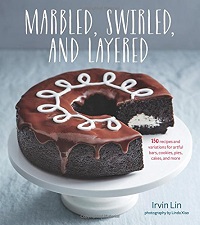
Bundt cakes are always impressive, thanks to the beautifully fluted and shaped pans that they are baked in. Though the cakes are easy to make compared to layer cakes because they (typically) require no frosting or special post-baking preparation before you can serve them, they’re not always easy to bake. Bundt cakes can get stuck in the nooks and crannies of the same pans that make them look so impressive. Cakes that include chocolate chips, toffee or other mix-ins are particularly vulnerable to sticking to the pan. Fortunately, with a little bit of grease – in the form of butter or oil, not elbow grease! – you can ensure that your cake will pop out perfectly every single time.
Melt your fat. Melt your butter or shortening in the microwave or in a small saucepan, or use vegetable oil.
Use a brush. Use a pastry brush to apply an even layer of fat to the interior of your pan. A brush will allow you to get into the nooks and crannies better than, say, a paper towel dipped in melted butter will. I prefer to use a nylon bristled pastry brush for a more precise application, but a silicone brush can also be used. Solid fats tend to want to stick to the pan a little better than vegetable oil even after they are melted, so don’t go overboard brushing on vegetable oil if that is what you are using to grease your pan. If it pools in the bottom of the pan, use a paper towel to blot it up.
Add flour. Add 1-2 tablespoons of flour to your greased bundt pan. Holding the pan over the sink or a trash can, move the flour around by turning the pan in your hands and tilting the open side towards the sink/trash can to avoid getting flour all over the floor. Once the pan is coated, give the edge of the pan a tap on the edge of your sink to release an excess flour.
Shortening vs butter: Technically speaking, shortening is better for greasing a pan than butter is because it is pure fat. The milk solids in butter can potentially caramelize on the sides of the pan and allow your cake to stick. Melting the butter before spreading it onto your pan will help minimize the risk of sticking and butter will give the exterior of your cake a slightly better flavor. That said, the layer of fat you’re using in your pan should be very thin regardless of what you’re using, so you shouldn’t taste it in the end.
Many bundt pans already have a nonstick interior, which does help the case release. As with nonstick cookware, however, the nonstick coating can lose its release over time and become susceptible to sticking again. I always recommend greasing and flouring a pan to ensure you get the best release.






What do you think?